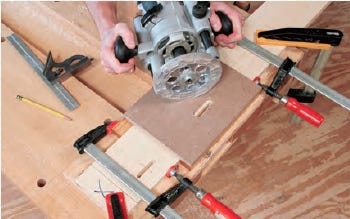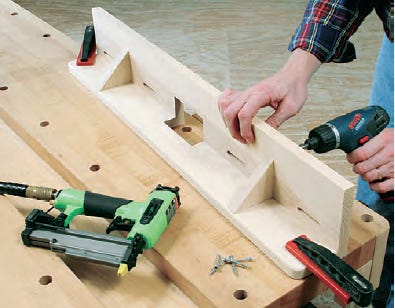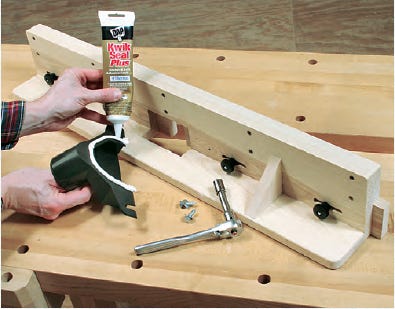Building a Wide-body Router Table Fence
This wide bodied router fence is designed for panel-raising and working with tall pieces and fits nicely on most router tables.
Store-bought router table fences do their job well. But, despite their strengths, I think many fence designs still come up short — literally. Two or three inches of height just doesn't provide enough vertical support for tall work.
For the Router Fence Diagram and Materials List, click here.
Here's where this shop-made fence really shines. It's a full five inches tall — and that extra real estate is a big help if you raise panels vertically or stand workpieces on edge for other milling. The fence's fixed top facing (piece 4) makes it easy to mount featherboards or a guard over the bit. The bottom facings slide open 3-1/2", which will accommodate most bits, even large horizontal panel raisers.
At 32" long, my fence will fit any standard-sized router table. Just clamp it in place or drill holes or cut slots through the base to match your table's current fence-bolt spacing.
Assembling the Base and Back

Cut the back (piece 1) to width and several inches longer than necessary. I used the extra length to help support a simple slot-cutting jig when routing the endmost bolt slots. My router jig was a quick "one-off" that consisted of a piece of 1/2" MDF with a 3/4"-wide through slot for guiding a plunge router equipped with a 3/4" O.D. rub collar. A pair of scrap rails tacked under the jig base allowed it to straddle the workpiece and provided a couple of "ears" for clamping. Fashion your jig so the router will cut 2"-long slots, and use a 5/16"-diameter straight bit to machine them.

Next, cut out the large router bit opening in the back panel. Trim the back to final length, then make the base (piece 2). Ease the base's top edges. Glue and tack the back to the base. Before the glue dries, miter-cut a pair of triangular braces (pieces 3), and install them behind the fence back with glue and brads. Make sure the braces hold the fence back at 90° to the base. Reinforce all these joints with 1-1/2" countersunk flathead wood screws.
Adding the Facings and Dust Port

Now, cut the top and bottom facings (pieces 4 and 5) to size. Glue and screw the top facing flush with the top edge of the fence back. Joint the bottom facings about 1/32" narrower to create a sliver of clearance below the top facing. That way, they'll still slide easily when the fence is locked down on the table. Now, set the fence face-down on your bench, slip the bottom facings into position, and mark the through-bolt hole locations. (The bolts should nearly touch the "inside" ends of the slots when the facings are closed.) I used a 5/16"-diameter brad-point bit as a punch, which gave me perfect centerpoints for drilling the 9/32"-diameter bolt holes. Bore 3/4"-diameter countersinks, 1/4" deep, into the facings to recess the carriage bolt heads (pieces 6). Thread knobs (pieces 7) onto the bolts to mount the facings on the fence.
Wrap up this handy project by installing the dust port with a pair of short lag screws and washers. Before you screw it in place, squeeze a bead of caulk around its inside rim to help improve the vacuum seal. Add a couple of coats of wipe-on finish, and this custom fence is ready for duty!
Keep the inspiration coming!
Subscribe to our newsletter for more woodworking tips and tricks





